The TrailRush marks Ride1Up’s ambitious entry into the premium eMTB market, and frankly, I’ve been waiting for this moment. As someone who’s been following R1U since the release of their game-changing CF Racer1—that sleek 28-pound carbon fiber machine available in both road and gravel configurations—I’ve maintained sky-high expectations for whatever this brand tackles next.
Built around a German-engineered Brose TF Sprinter mid-drive motor delivering 90nm of torque, this Class 3 electric mountain bike pushes pedal assist up to 28mph. It’s a serious departure from the lightweight road-focused builds that first caught my attention, but it carries that same DNA of thoughtful engineering and aggressive value positioning that made me a believer in the brand.
Between the CF Racer (which, as a self-proclaimed ‘pretty OK at gravel bikes’ guy, I found to hit all the right notes in terms of geometry and component selection) and their wildly popular Roadster V3, Ride1Up has established a pattern: delivering legitimate performance at prices that make the big brands sweat. Case in point, that CF Racer at 28 pounds for $2,195 was simply unheard of from bigger manufacturers, yet the geometry was spot-on and components were well-chosen throughout. It’s that kind of value proposition that keeps me coming back to see what they’ll do next.
So when word dropped that R1U was developing an eMTB hardtail with a mid-drive system, I was genuinely pumped to get it in for testing. The TrailRush features a lightweight alloy frame with internally routed and protected electronics, while the mid-drive placement provides that natural pedaling feel and balance that lets you leverage the bike’s capability whether you’re grinding up chunky technical climbs or bombing down descents.
With a claimed range of 30-50 miles and that direct-to-consumer approach keeping costs competitive, the TrailRush is here—and honestly, I’m eager to see if it lives up to the standard this brand has set.
And hey, R1U brass, I’m still waiting on that CF Racer2 announcement.
My Experience Riding The Ride1Up Trailrush E-Bike
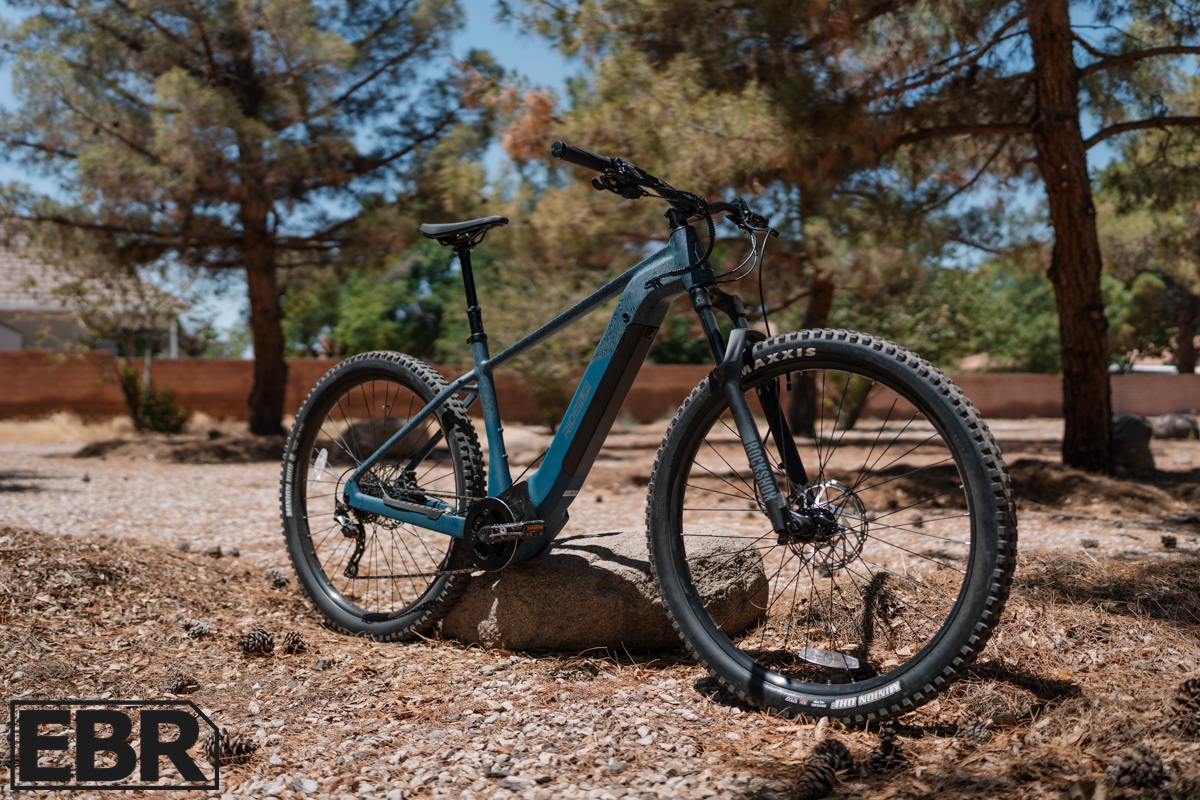
I was sent the Large frame for testing in the Cobalt colorway, which features a matte finish cobalt blue with some darker blue accent styling lines along the top tube. At 5’11”, the Large fit me well with plenty of room, which makes sense since I’m on the shallow end of the 5’10” to 6’4″ sizing range.
The bike rides great and has true MTB geometry with that 66.5° head tube angle and 29″ wheels. Those wheels are tubeless compatible along with the Maxxis Minion tires—a huge win for those of us who live in areas where flat tires are common, like I do here in southern Utah with goat heads everywhere.
The Brose TF Sprinter mid-drive pumps out 90nm of torque and peaks at up to 410% of the rider’s effort from its 250W nominal power. What this translates to is a bike that can crush inclines and climbs, plus speed up to 28mph with pedal assist on flats. It’s impressively smooth and quiet—I only heard it when I was specifically listening for it while using max power in Boost mode.
The RockShox Judy Silver air fork with 120mm of travel and rebound adjustments felt great on the trail, soaking up impacts and drops along the way. I did notice that in Eco and Tour modes, the mid-drive didn’t offer a ton of assistance on trails, but those same lower PAS levels worked great for paved rides around town. On trail, however, especially on climbs, the Sport and Boost modes are awesome at tackling off-road terrain with ease.
Range
Estimated Range (from Ride1Up):
- 30 to 50 miles
Real World Range Test Results:
- MIN PAS: 78 miles
- MAX PAS: 31 miles

Ride1Up estimates between 30 and 50 miles of range, so I put it through two real-world tests: a minimum PAS test in Eco mode and a maximum assist run in Boost mode. On the max run, I covered 31 miles before the battery tapped out—that’s going full bore the entire time. On the flip side, after a recharge I covered a whopping 78 miles from a single charge before the battery finally waved the white flag.
So how did it go so much further on Eco than expected? I’m not really sure, but it aligns with my results when trail riding in Eco mode, where it only offers minimal assistance. The dynamically tuned torque sensor probably plays a big role here, delivering power only as needed based on your pedaling effort rather than just dumping watts constantly.
Either way, if you blast it in Boost mode you’re getting around 30 miles and a couple hours of riding, or in Eco mode you get an all-day adventure—albeit at slower speeds. That 78-mile result honestly surprised me and shows just how efficient a well-tuned mid-drive system can be when you’re not asking it to do all the work. For most trail riders, you’ll probably land somewhere in the middle depending on how much you lean on the motor for climbs and technical sections.
Power (Motor & Battery)
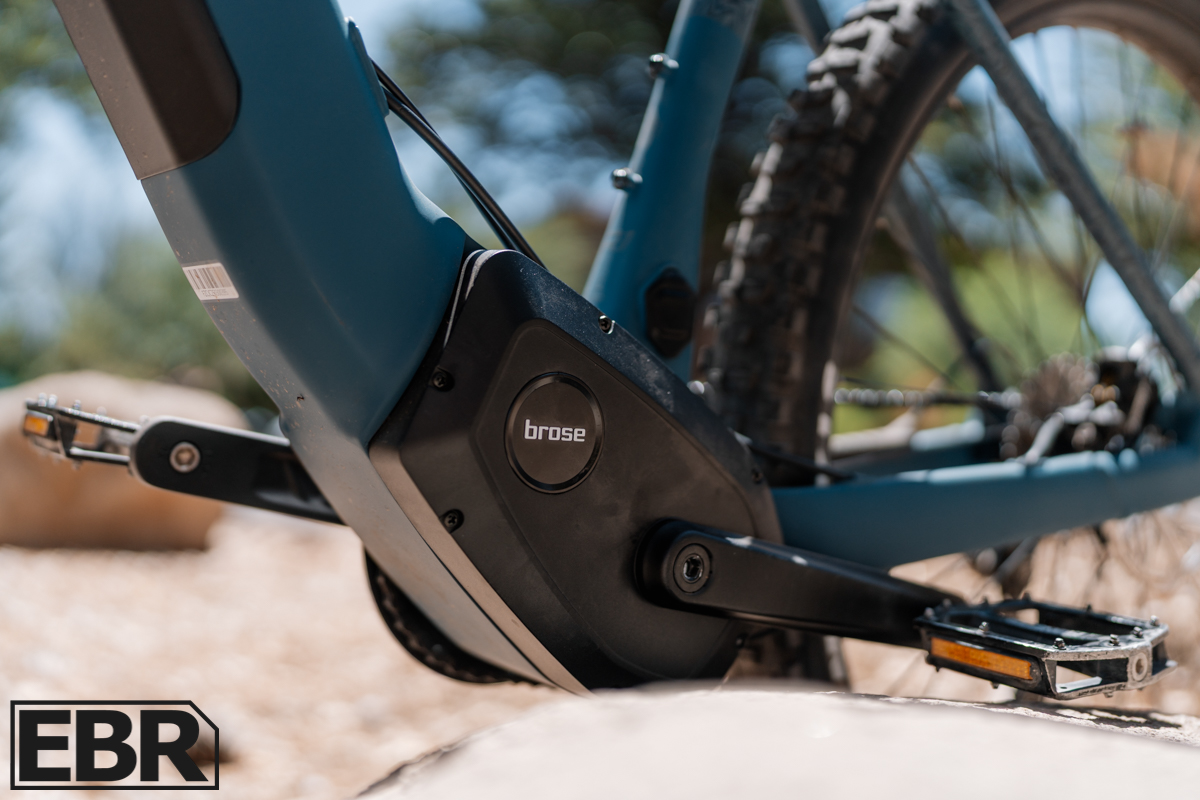
The heart of the TrailRush is the Brose TF Sprinter mid-drive motor, putting out 250W of continuous power with 90nm of torque. The torque sensor provides smooth, natural power delivery that responds to how hard you’re pedaling rather than just spinning up when you turn the cranks. You get five levels of pedal assist—Eco, Tour, Sport, and Boost—that let you dial in exactly how much help you want.
I found the Eco and Tour modes work great for around-town riding or when you’re on pavement and don’t need much assistance. Sport and Boost modes really shine when you’re tackling off-road climbs or need quick, punchy speed between features on singletrack where you only have a small window to get up to speed. The motor stays impressively smooth and quiet throughout—I only heard it when I was specifically trying to listen for it, and even then only in Boost mode when it was working hardest.
There’s no throttle on this setup, and for an eMTB, I’m totally fine with that. The last thing you want is an accidental throttle tap when you’re navigating some sketchy technical ledge or trying to maintain precise control through tight sections.
When you stack the TrailRush against competitors like the Aventon Ramblas (which delivers 100nm with its A100 mid-drive) or the Trek Marlin+ (coming in at just 50nm with a 400Wh battery), the value proposition becomes clear. Sure, the Ramblas has 10nm more torque, but both it and the Trek come in significantly more expensive, showing Ride1Up’s knack for packing serious performance into a price point that actually makes sense.
The battery is a 36V, 14Ah unit delivering 504Wh of total capacity. It’s fully integrated into the downtube and can be removed by taking off the downtube cover and using the physical keys to unlock it from the frame. The process is straightforward enough for charging indoors or swapping batteries on longer rides. It ships with a 2A charger that gets the job done without being particularly fast.
Components
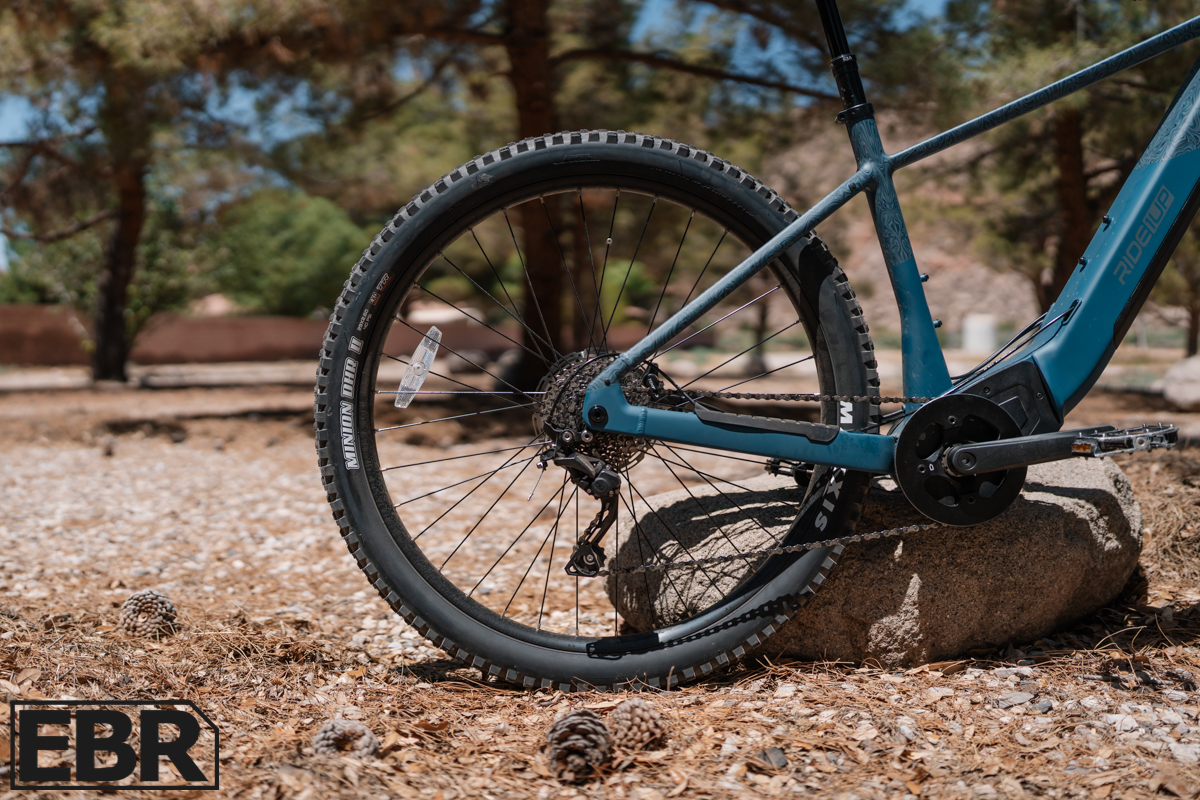
The TrailRush’s component selection shows Ride1Up doing what they do best—picking parts that actually make sense for the riding you’ll be doing. The Shimano Deore 1x setup handles shifting with an 11-36t cassette and 38t chainring, giving you enough range for most climbs without getting too spinny on the flats. The Deore shifter and derailleur are bulletproof choices, while the KMC e10 chain is built specifically for mid-drive torque.
The RockShox Judy Silver TK Air fork gives you 120mm of travel with hydraulic lockout and adjustable rebound—enough suspension for proper trail riding without going overboard. It’s not the fanciest fork out there, but it’s a smart pick that gets the job done.
Stopping power comes from Tektro Orion HD-M745 quad-piston brakes, which provide solid bite when you’re hauling down trails at eMTB speeds. They’re not the flashiest brand name, but four pistons are four pistons, and they’ll stop you when it matters.
The Exaform KSP900 dropper gives you 150mm of drop, which is plenty for getting out of the way on descents. It’s become essential gear for any serious trail bike, and this much travel makes a real difference in how you can ride technical stuff.
For wheels and tires, you get double-walled aluminum rims wrapped in Maxxis Minion 29″x2.6″ rubber. Both are tubeless-ready, though you’ll need to add some tubeless tape and valves to finish the conversion yourself. The DHF/DHR combo is a tried-and-true trail setup that works in pretty much everything.
The cockpit setup includes 780mm bars with 28mm rise and 6° sweep, plus lock-on Velo ergo grips that actually feel good. The MTB-style stubby stem gives you 45mm of rise and a 35mm bite, and the Selle Royal SRX saddle is comfortable enough for longer rides. Nice touches include water bottle mounts and a chainstay guard to keep your frame from getting beat up by chain slap.
Screen / User Interface / App
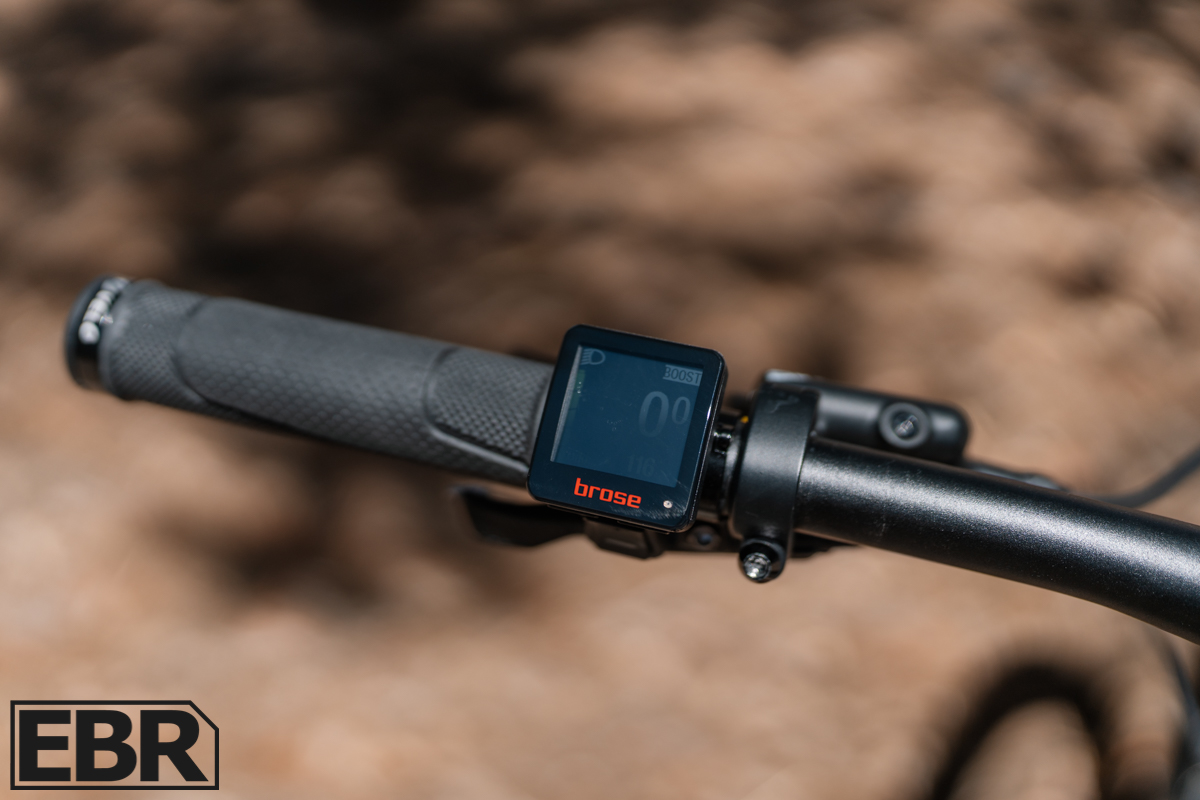
The TrailRush uses the Brose All-Around display, which features a 1.5-inch color LCD that’s easy to see even in direct sunlight—though some riders might find the small font size challenging on such a compact screen. The control layout is straightforward with a power button, mode button, headlight button (which is useless here since there’s no integrated light), and a walk mode button, plus an up/down rocker pad for cycling through PAS levels.
All the basics you’d want are right there on the screen: speed, battery level, PAS level, odometer, trip meter, average speed, cadence, power output, and current time. It covers everything you need to know about your ride without overwhelming you with unnecessary data.
In the advanced settings, you can adjust screen brightness, auto-off timing, units of measurement, and there’s a Bluetooth connection option that seems pretty useless at this point. I found a Brose e-bike app, but it appears to be Europe-focused, so as of now I can’t find any practical use for the Bluetooth feature on this side of the pond.
Ride1Up also doesn’t have apps for any of their bikes, which might be part of their value strategy with less overhead and complexity. Honestly, all the info you need for your ride is right there on the display anyway. Sometimes keeping things simple is the better approach—you’re not dealing with phone mounts, app crashes, or connectivity issues when you just want to ride trails.
Ride1Up Trailrush Model Options
The TrailRush comes in two frame sizes to cover most riders: Medium fits riders from 5’5″ to 5’10”, while Large accommodates 5’10” to 6’4″. There’s decent overlap in that 5’10” range, so if you’re right on the border, consider your riding style and whether you prefer a more compact or stretched-out feel.
Color-wise, you get three solid options. There’s Burnt Sunset (orange), Cobalt (the blue I was sent for testing), and Galaxy Grey—though despite the naming, Galaxy Grey looks more like a gloss black with tons of rainbow glitter that emerges at certain angles of light. It’s honestly the best color option in my opinion, but if that’s not your thing, the other two should cover what you’re looking for.
At this time, Ride1Up hasn’t announced any specific accessories for the TrailRush, but that might change since the bike just launched. On the flip side, you’ve got mounting bosses on both the downtube and seat tube, so you can add your own bottle cages or whatever accessories you want to run. It’s a clean setup that gives you flexibility without forcing you into their accessory ecosystem.
The lack of pre-designed accessories actually works in the bike’s favor—you’re not paying extra for branded parts you might not want, and you can set it up exactly how you ride.
Is The Ride1Up Trailrush Worth Buying?
Bottomline, this bike delivers on the promise that got me excited about Ride1Up in the first place; legitimate performance at a price that doesn’t make you question your financial decisions.
What I loved most about the TrailRush is something that’s hard to quantify: the geometry just works. Whether it’s the reach and stack, the wheelbase, or that 66.5° head tube angle, this bike has a playful, fun feeling that makes bombing singletrack feel like you’re flowing with the bike rather than trying to control it. It’s a subtle difference that pays huge dividends in the overall ride experience, it’s the kind of thing that separates good mountain bikes from great ones.
All the essentials are in place beyond that geometry magic. The 120mm RockShox air fork, Tektro Orion 4-piston brakes, dropper post, and 29″ tubeless-ready wheels and tires make this a legit eMTB setup. That Brose motor is powerful, smooth, and quiet, with 90nm being more than enough to smash climbs. Plus, in Eco mode I was able to cover serious miles on a single charge.
Is it perfect? No, but it’s pretty close. The PAS control button tends to get accidentally hit by my thumb when trail riding despite my attempts to avoid it, and at 58 pounds, it’s not exactly light. But with the balanced design and mid-drive motor placement, the weight doesn’t hinder the TrailRush from delivering the MTB ride experience you want.
For riders looking for their first eMTB or anyone wanting serious trail capability without the typical premium price tag, the TrailRush hits that sweet spot Ride1Up has become known for.
Pros
- Priced at just $2,095, the Trailrush might be the best value of a legit modern eMTB available right now.
- The Brose Mid-Drive with 90 Nm of torque and smooth power delivery felt great both on and off pavement making climbs feel easy and acceleration picks up quickly.
- The bike comes Tubeless compatible with 29’er wheels and tire setup with 2.6” Maxxis Minion DHF/DHR.
- All the essentials like Rockshox suspension, Tektro 4P Brakes, Shimano Deore 1×10 drivetrain and a 150mm dropper post cement the Trailrush into ‘Single Ready’ territory.
- The 66.5 ° head tube angle of the Trailrush gives it the capability of a modern XC or Downcountry bike with solid control in descents and the ability to corner at speed.
- Excellent braking performance thanks to the Tektro Orion 4P Hydraulic Disc Brakes with 180mm rotors
Cons
- The Brose All-Around displays PAS rocker pad sits in a position below the display and I found it to interfere with remote for the dropper post placement and sometimes I accidentally bumped it with my thumb when trail riding causing unwanted PAS level changes mid-ride.

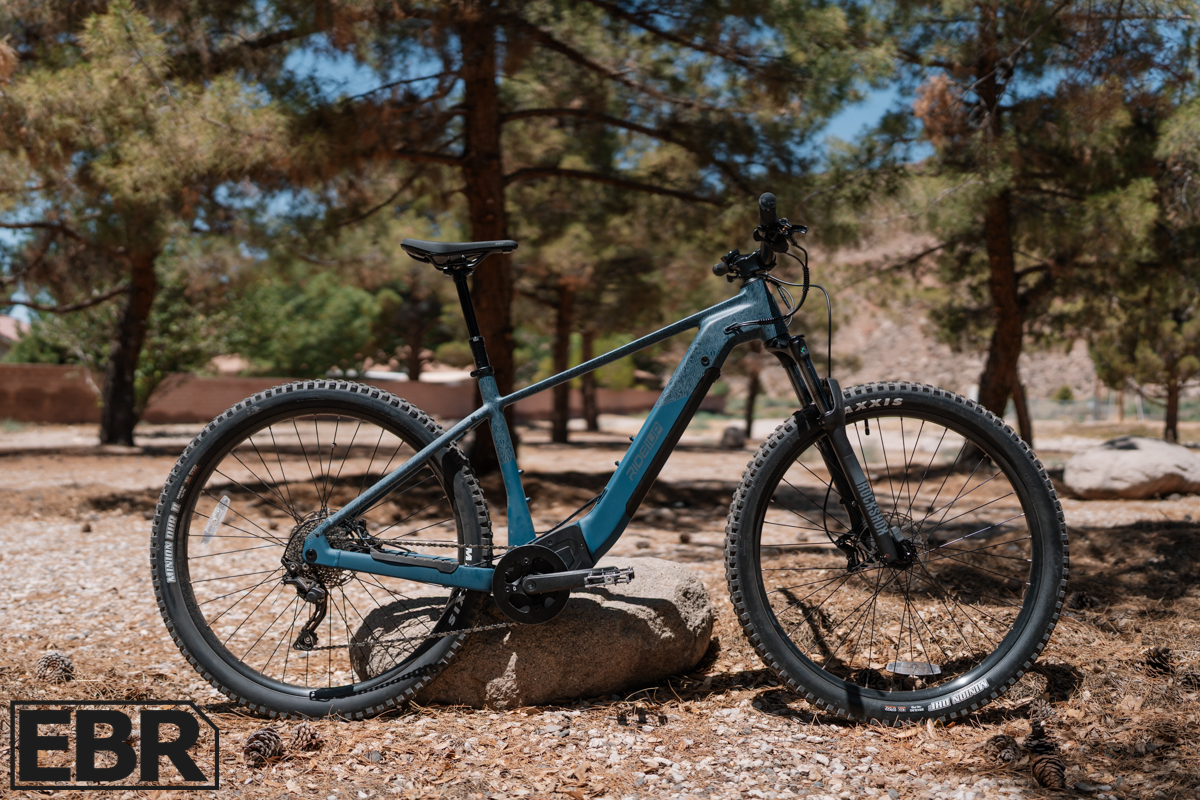
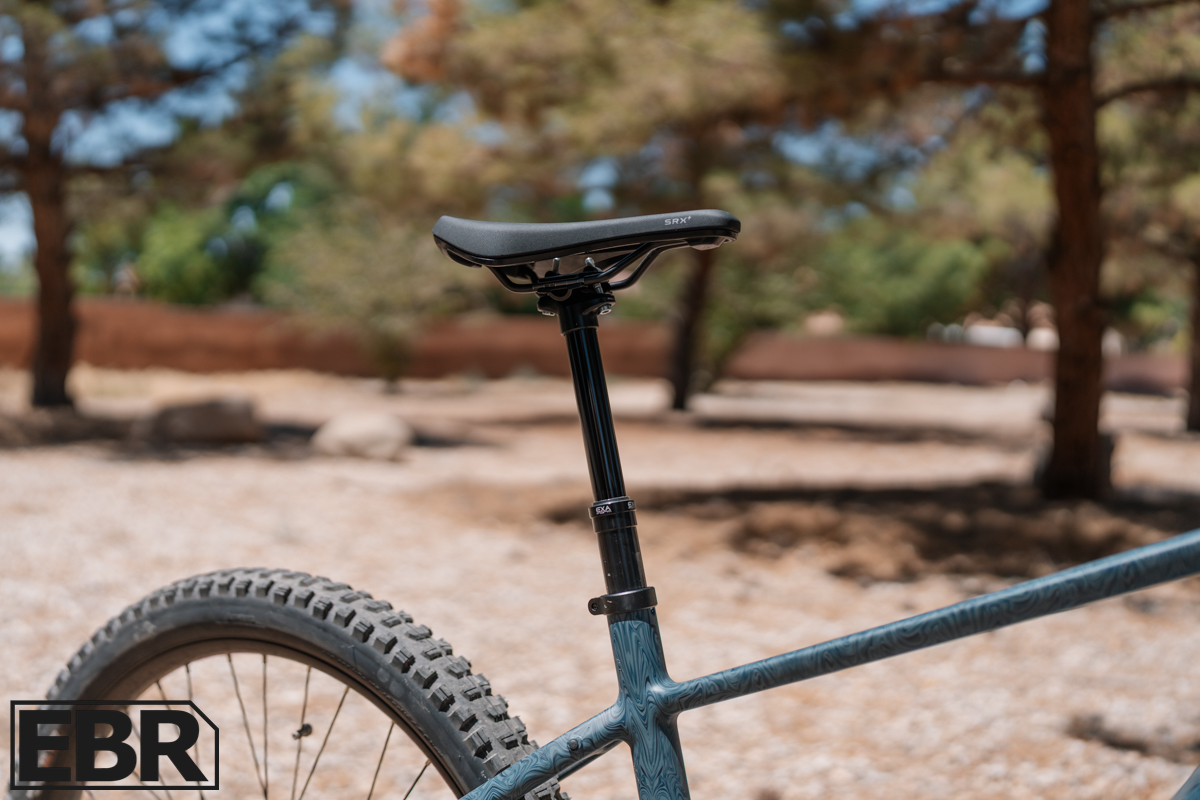
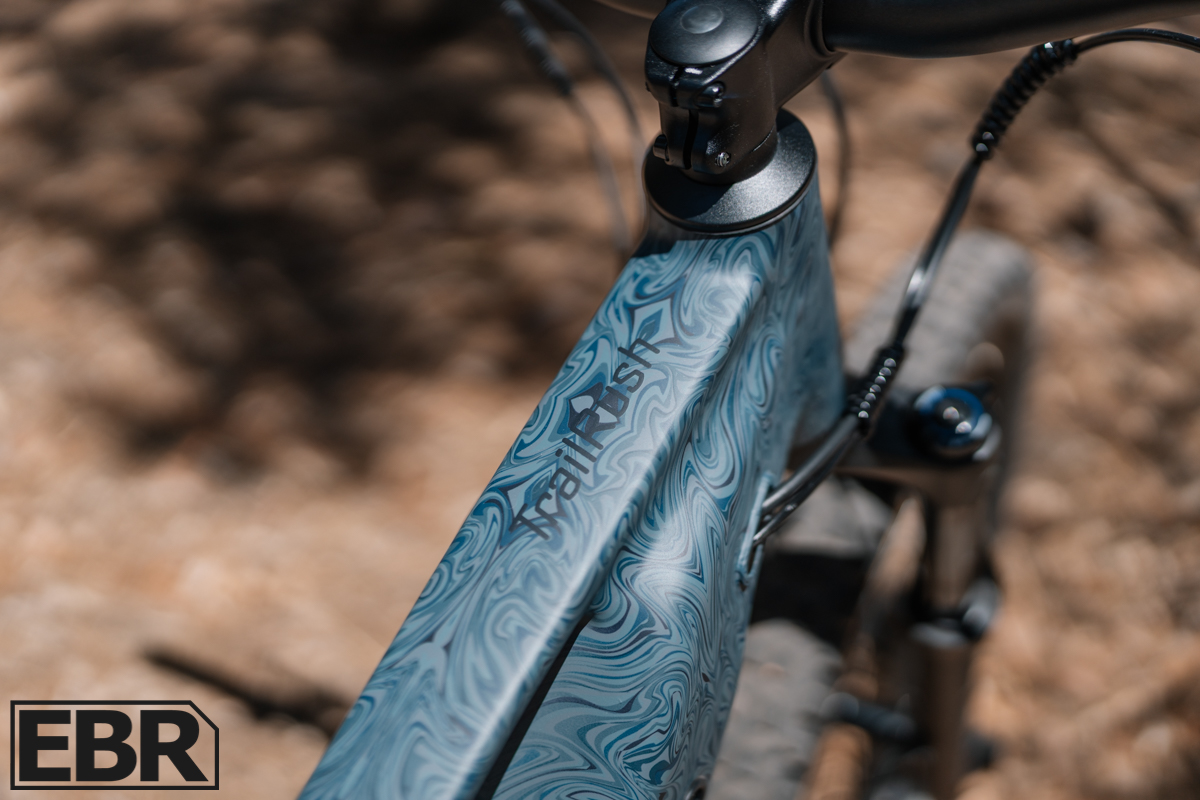
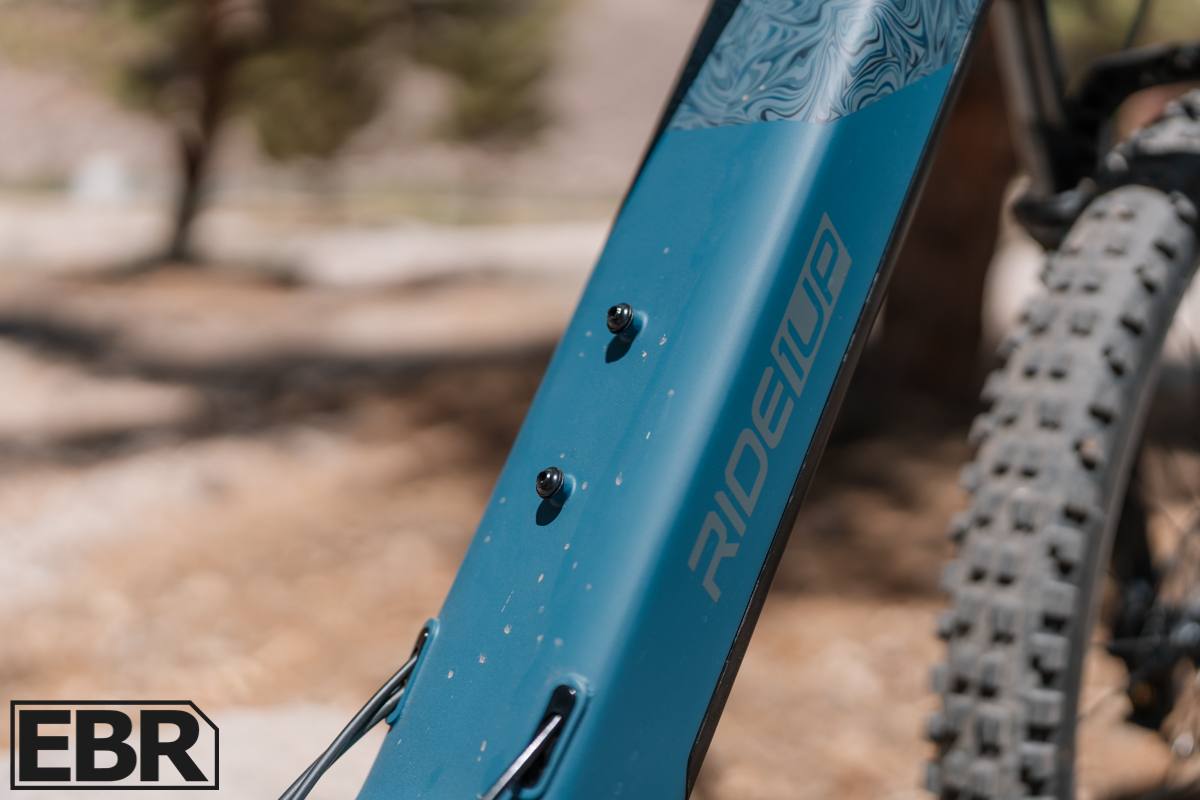
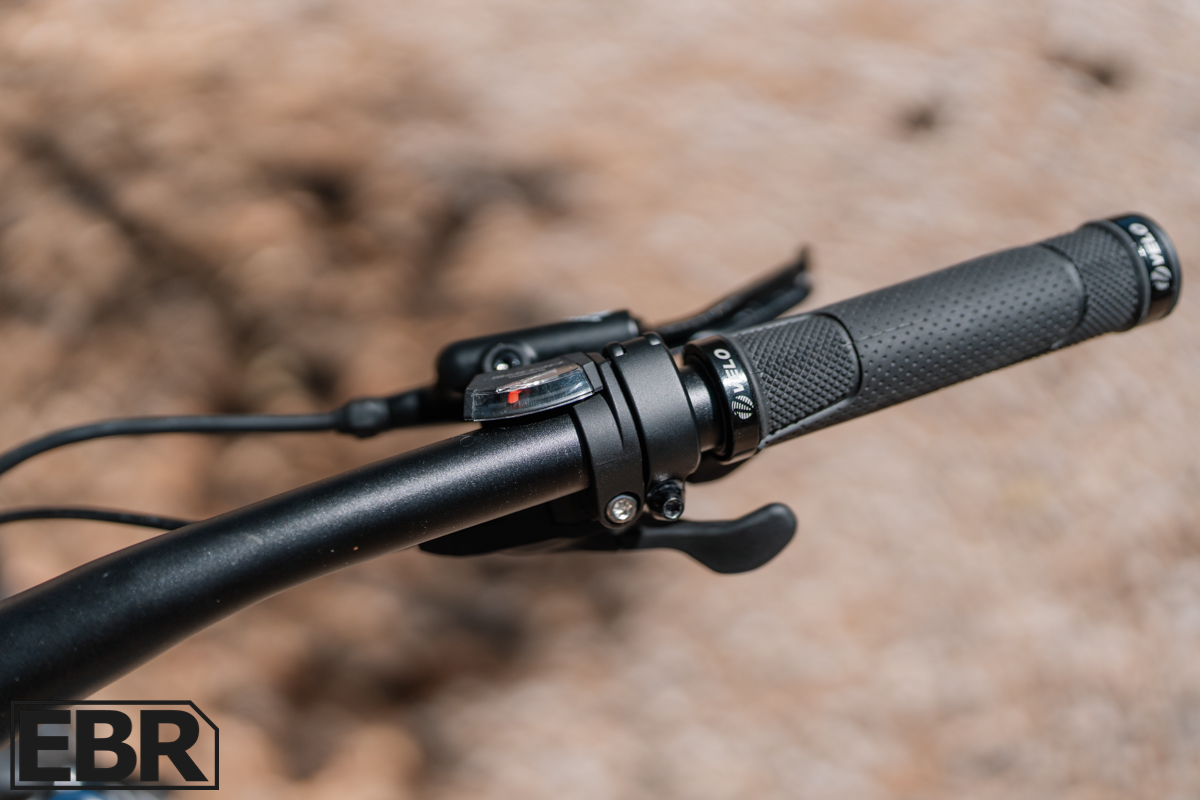
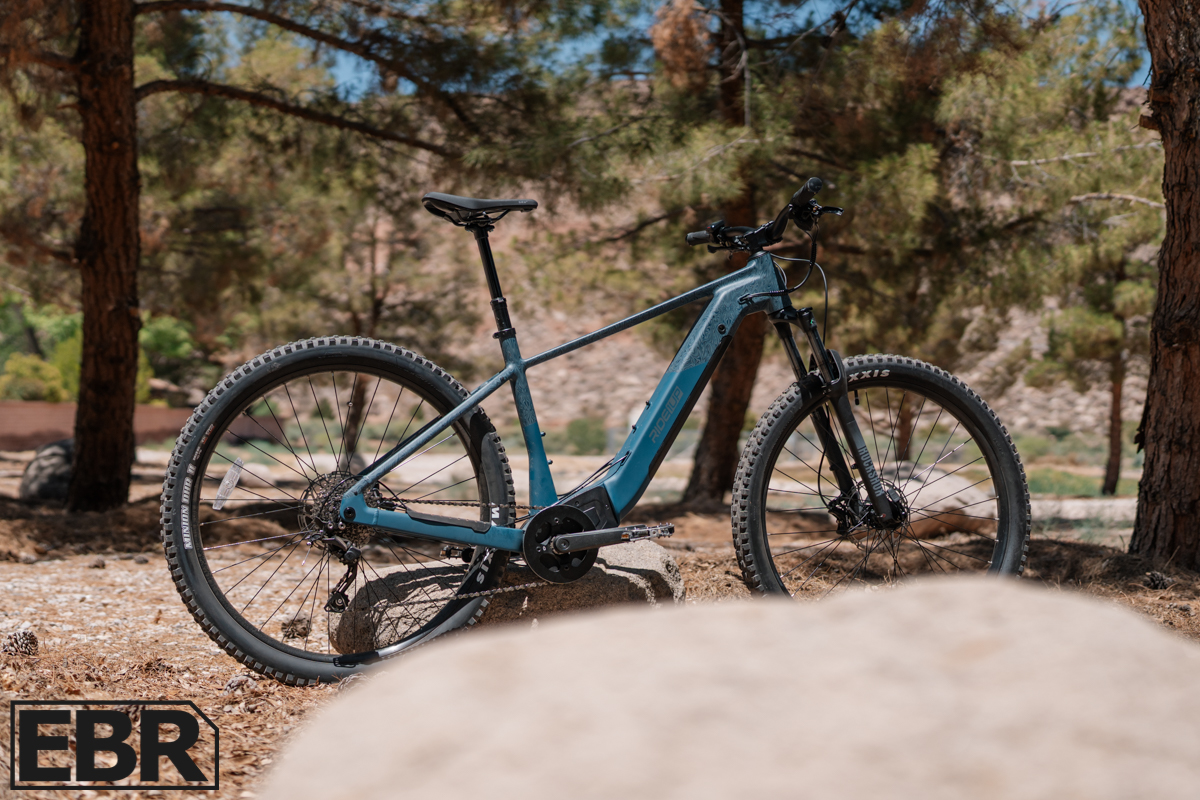

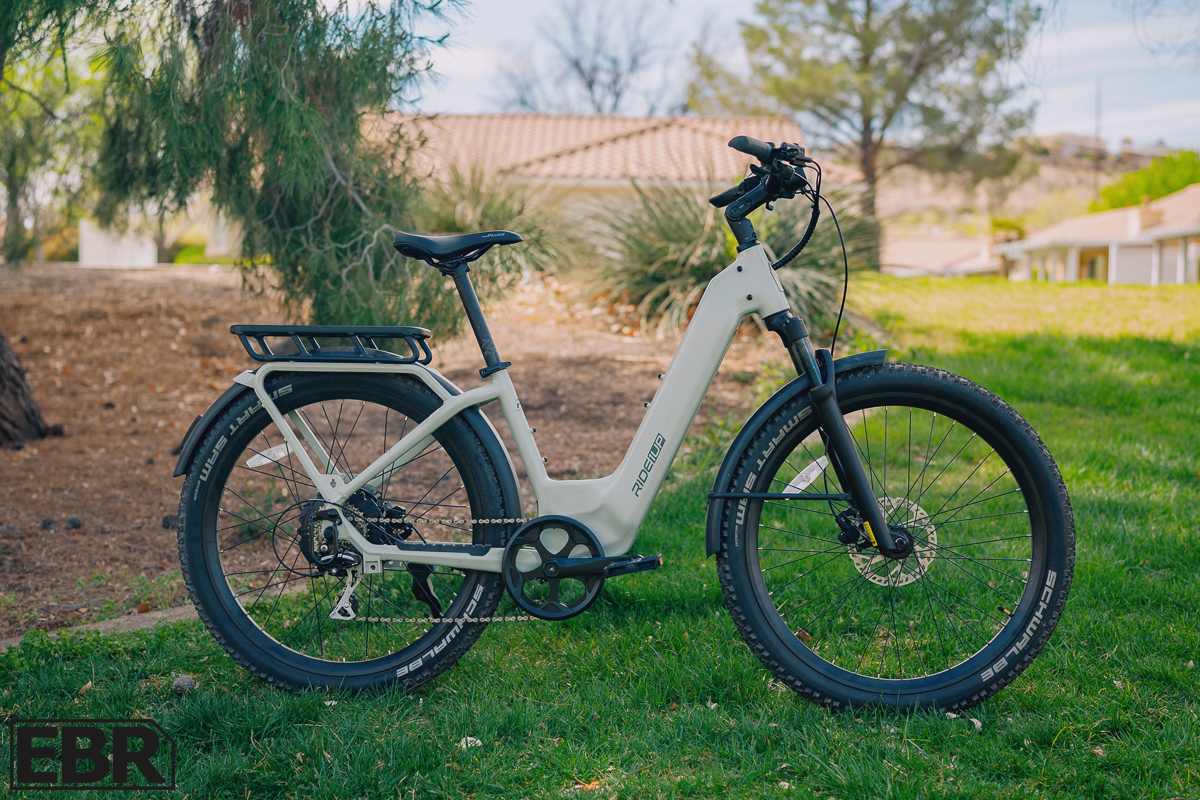

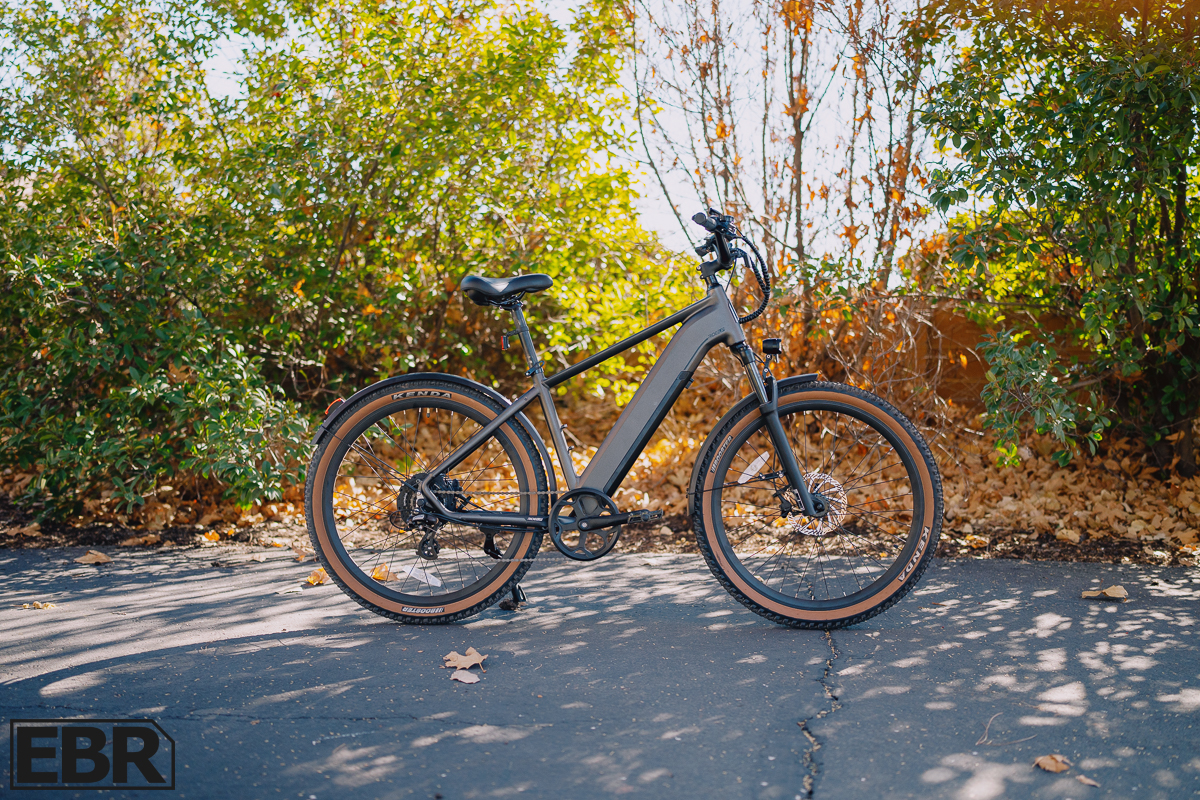
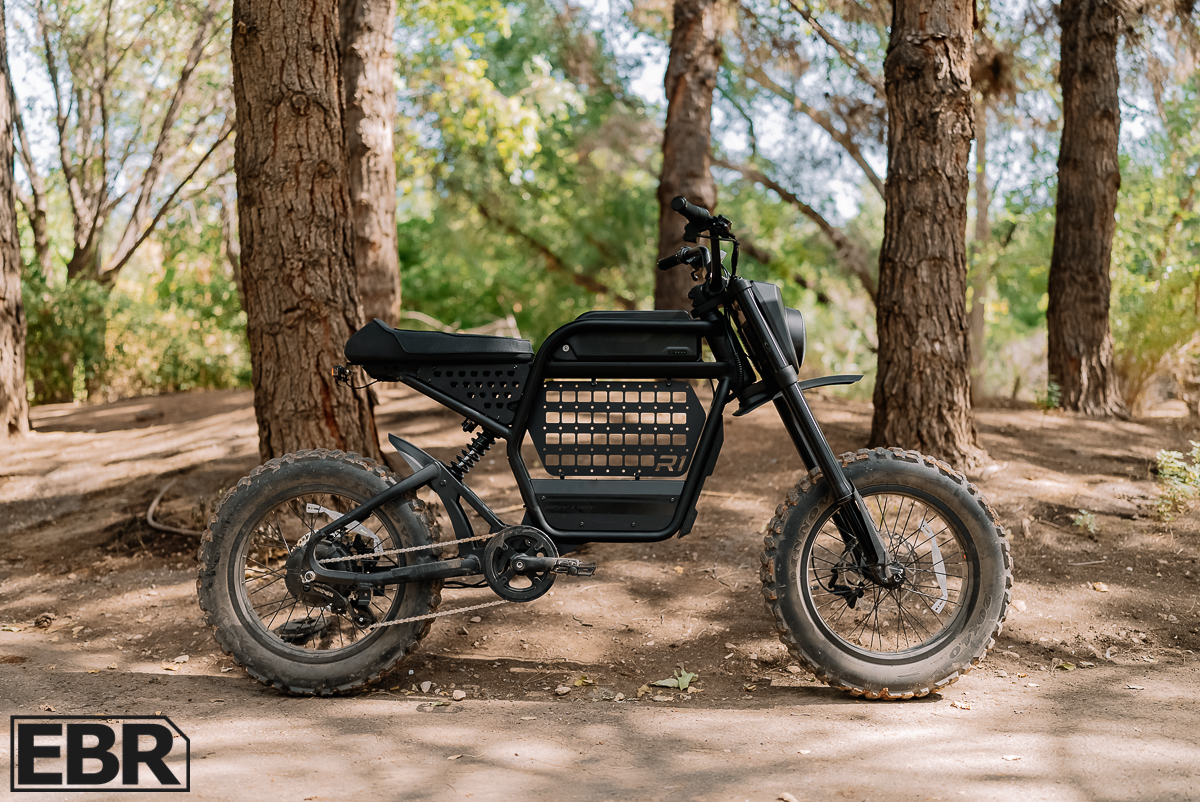
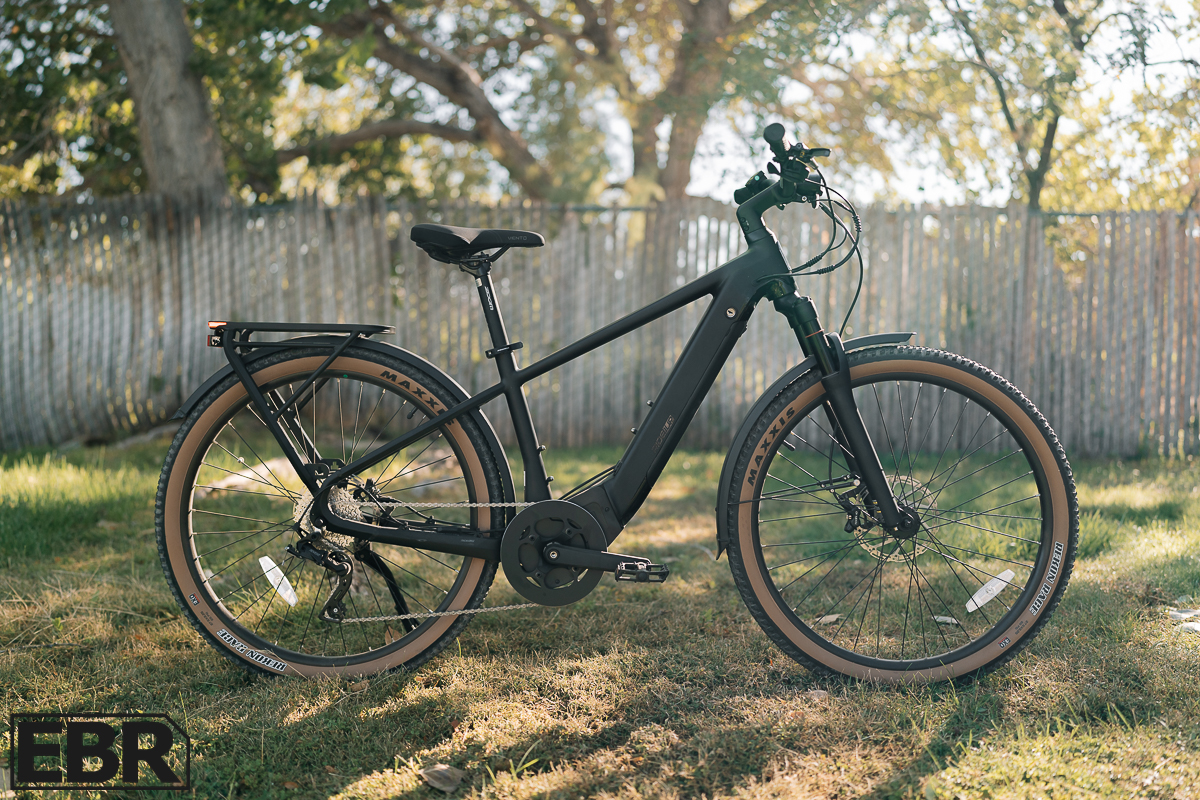
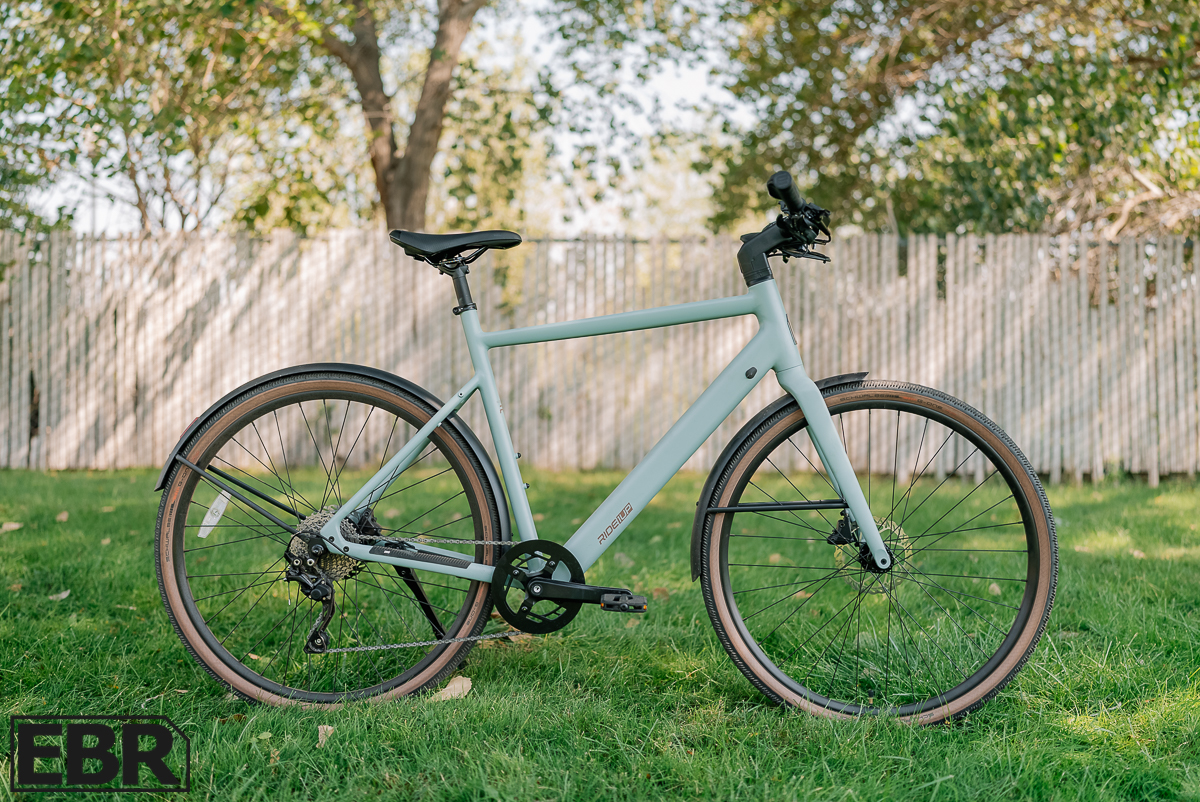
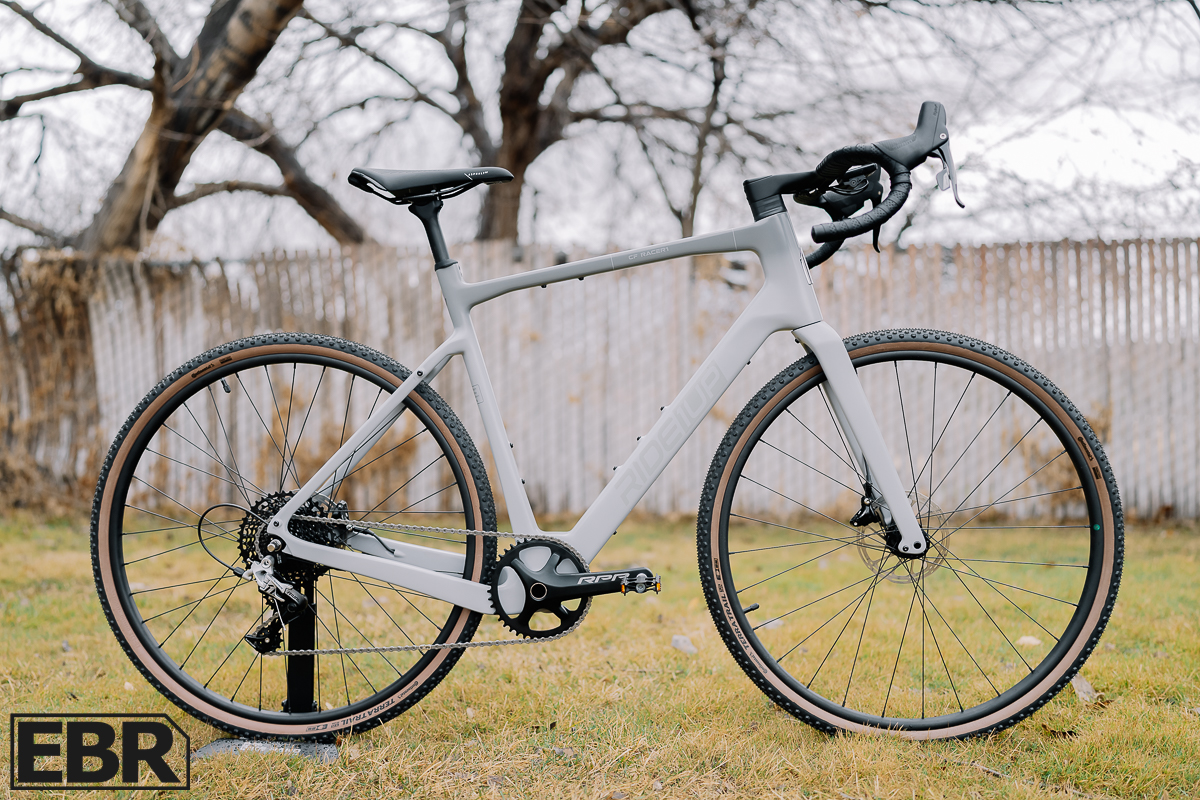
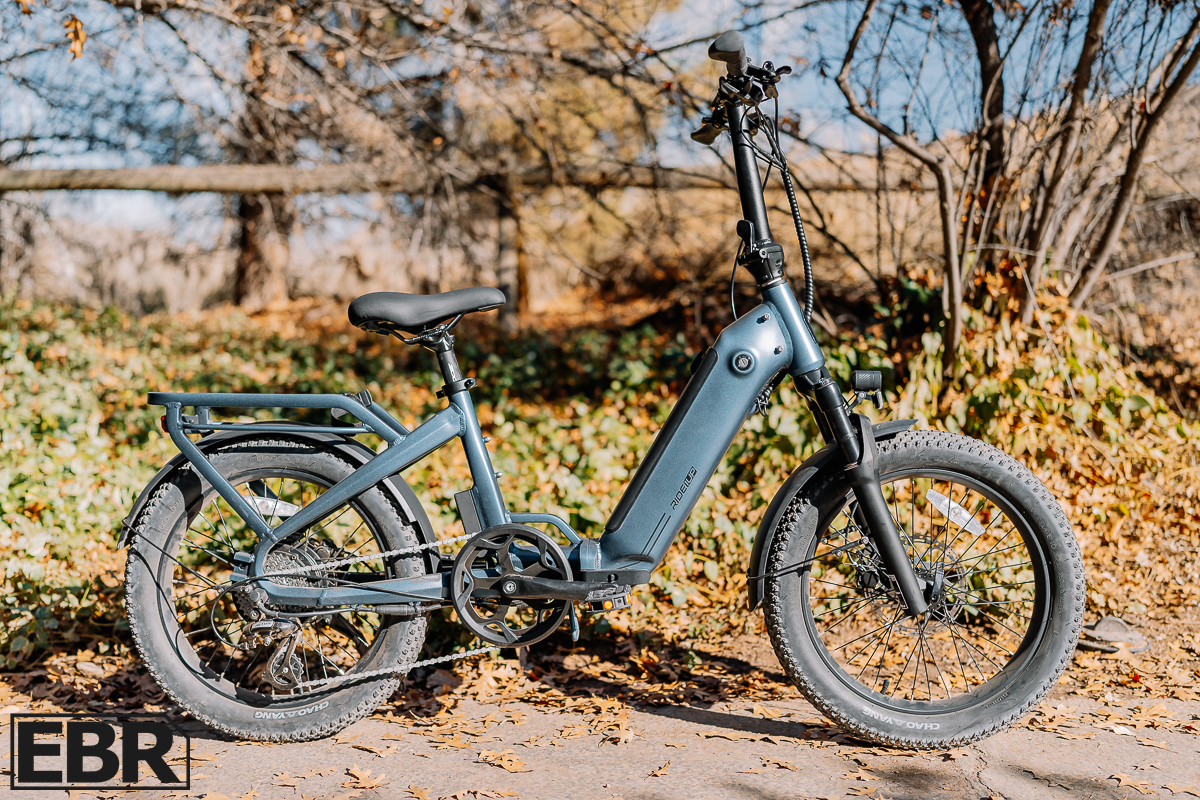

Reader Interactions